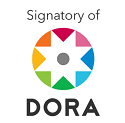Analysis of the job design model in an automotive company
Abstract
The objective of the research was to analyze the job design model in an automotive company. Methodologically, the research was descriptive in nature, because the event studied is presented, listing its characteristics in detail. Regarding the results of this study; It was possible to demonstrate that through the contingency model and with the variety indicator that workers develop diversity of skills in their workplace, in the same way the autonomy indicator reflects that personnel plan and execute their work activities freely. It is concluded that there is job dissatisfaction, through which workers perceive the development of job satisfaction as negative, workers express lack of motivation to perform the tasks assigned by their immediate manager and their efforts are not recognized within the entire team. work, impacting low self-esteem of workers
Downloads
References
Bohlander G y Snell, S. (2001) Administración de Recursos Humanos. (10ªed.). México: Edición. Internacional Thomson Editores
Chiavenato, I. (2002). Gestión del Talento Humanos. (1ªed.). Colombia: MCGRAW- HILL INTERAMERICANA, S.A.
Chiavenato, I. (2007) Administración de recursos humanos: el capital humano de las organizaciones (8va ed.). Colombia: Mc Graw-Hill.
Chiavenato, I. (2009). Gestión del Talento Humano. (3ª ed.). Colombia: Editorial McGraw Hill.
Hernández, R., Fernández, C. & Batista, P. (2010). Metodología de la investigación. (5ª ed.). México: McGraw- HILL Interamericana., S.A.
Ivancevich, J., Konopaske, R., y Matteson, M.(2006).Comportamiento Organizacional. (5ª ed.). México: MacGraw-Hill.
Robbins, S. (2004). Comportamiento Organizacional. (10ª ed.). México: Pearson.
Tamayo y Tamayo (2003). El proceso de investigación Científica. Casos y práctica. (4ª ed.). México: Limusa.
Werther, W y Davis, K. (2008) Administración de Recursos humanos. El capital humano de las empresas. (5ª ed.). México: MCGRAW- HILL INTERAMERICANA, S.A.
Copyright (c) 2024 Marco Antonio Romero-Nava

This work is licensed under a Creative Commons Attribution-NonCommercial-ShareAlike 4.0 International License.
LICENCIA DE CONTENIDO
Creative Commons
Atribución-NoComercial-CompartirIgual 4.0 Internacional (CC BY-NC-SA 4.0)
Política propuesta para revistas que ofrecen acceso abierto
Aquellos autores/as que tengan publicaciones con esta revista, aceptan los términos siguientes:
Usted es libre de:
Compartir — copiar y redistribuir el material en cualquier medio o formato
Adaptar — remezclar, transformar y construir a partir del material
La licenciante no puede revocar estas libertades en tanto usted siga los términos de la licencia
Bajo los siguientes términos:
Atribución — Usted debe dar crédito de manera adecuada, brindar un enlace a la licencia, e indicar si se han realizado cambios. Puede hacerlo en cualquier forma razonable, pero no de forma tal que sugiera que usted o su uso tienen el apoyo de la licenciante.
NoComercial — Usted no puede hacer uso del material con propósitos comerciales.
CompartirIgual — Si remezcla, transforma o crea a partir del material, debe distribuir su contribución bajo la lamisma licencia del original.
No hay restricciones adicionales — No puede aplicar términos legales ni medidas tecnológicas que restrinjan legalmente a otras a hacer cualquier uso permitido por la licencia.
DERECHOS DE AUTOR Y PERMISO
La revista permite que los autores tengan los derechos de autor sin restricciones.
La revista permite que los autores conserven los derechos de publicación sin restricciones; y garantizan a la revista el derecho de ser la primera publicación del trabajo.


















